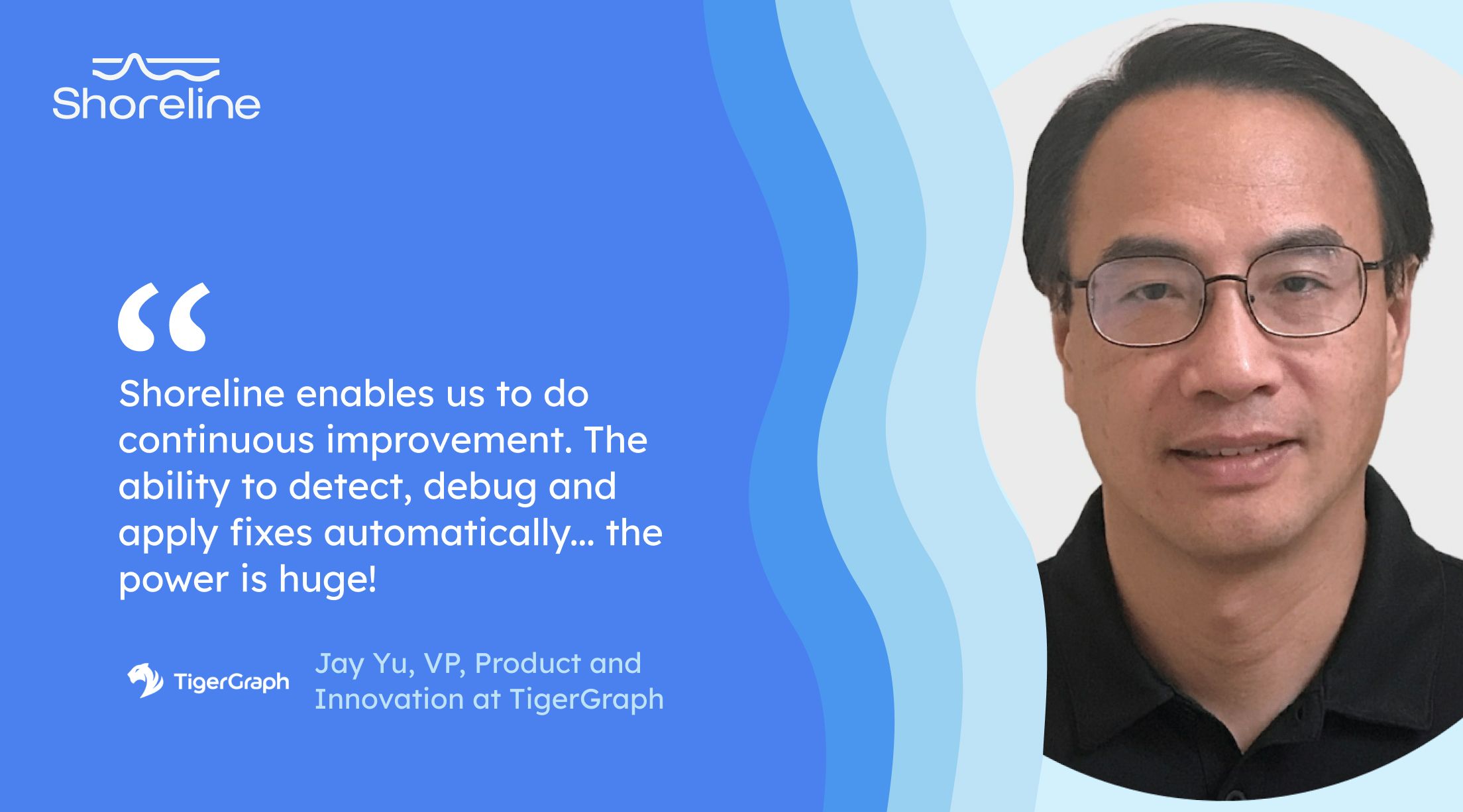Our CEO Anurag Gupta was recently invited to speak alongside TigerGraph's VP of Product and Innovation, Dr. Jay Yu, at a Techstrong Learning session hosted by DevOps.com. The session focused on how TigerGraph uses Shoreline to scale in the cloud with a small operations team and a limited budget.
In this blog, we’ll recap some key takeaways from that session including the value Shoreline brings to TigerGraph’s operations team. For more information, watch the full Techstrong Learning session.
TigerGraph’s Path to Growth
TigerGraph offers a graph analytics platform that changes how data is organized, analyzed, and used across industries. With the company’s solution, customers can create multi-dimensional data graphs in seconds instead of hours and improve the way they connect siloed data, analyze connected data, and learn from connected data. TigerGraph’s customers range from e-commerce companies that use the platform to connect hundreds of different data sets to financial services companies that use it to detect fraud.
After the company’s Series C investment in early 2021, TigerGraph was ready to expand its customer base. But with a small operations team, the company needed a solution to help maintain cloud reliability and prevent outages — without hiring additional staff. To meet TigerGraph’s DevOps tool requirements, the chosen solution had to:
- Precisely identify issues in seconds to help flag and prevent issues that lead to customer downtime.
- Automate away straightforward and mundane tasks to reduce the burden on limited resources.
- Reduce costly escalations from L1 on-call and support so managers and executives could focus on innovation.
- Work consistently across multiple clouds, on-premises systems, VMs, and containers.
- Support debugging and repair across every customer, cloud, region, account, and cluster.
How TigerGraph Uses Shoreline
In Shoreline, TigerGraph found the perfect solution for their needs. Shoreline’s cloud reliability platform provides an end-to-end solution to monitor TigerGraph’s growing infrastructure and simultaneously flag and repair issues, saving valuable time and money.
TigerGraph uses Shoreline primarily for two different use cases.
Standardizing Operations to Increase Speed and Rigor
With Shoreline, TigerGraph gathers diagnostic data faster and more consistently. The company can continuously check services to see which are up, down, or degraded and quickly debug needle-in-a-haystack-type problems that previously took hours to detect and diagnose. TigerGraph also uses Shoreline to automate installs and upgrades so operations teams aren’t bogged down with managing mundane tasks.
Enabling Self-Service
TigerGraph also uses Shoreline to enable more self-service capabilities for employees at every level of the operations team — resulting in fewer escalations and a faster mean time to resolution (MTTR). With Shoreline, TigerGraph benefits from a library of templates and pre-built solutions to common cloud operations issues like disk cleaning or resizing. With the press of a button, users can follow a simple recipe to execute these tasks — regardless of their expertise or familiarity with the issue.
With Shoreline, TigerGraph already saves its operations team 50-60 hours a month. Shoreline’s cloud reliability platform allows the team to execute tasks that previously took two hours or more (diagnosing issues or executing a repair) in mere seconds.
Opportunity for the Future: Continuous Improvement
TigerGraph has already seen significant ROI from its use of the Shoreline platform. To date, Shoreline has helped TigerGraph automate “low-hanging fruit” tasks like cleaning disks, monitoring log space, and restarting servers and services.
The next step is continuous improvement. Every automation that is built and deployed through Shoreline frees up your team from ever dealing with that issue again. Say you get 100 tickets per week. If you focus on automating one issue repair per week, that work will quickly add up and pay off — reducing the overall number of tickets you receive. Operations teams can then begin to shift from a constant state of “firefighting” to a more balanced workload where more time is spent on innovation versus solving the same issues over and over again.
The team at TigerGraph plans to implement additional automations to prevent other causes of downtime and degraded service, based on root cause analysis data that the Shoreline platform captures and reports. As each incremental automation is added, TigerGraph will save additional hours of operations time and be able to spend more time and energy focusing on how to innovate and expand the business.
